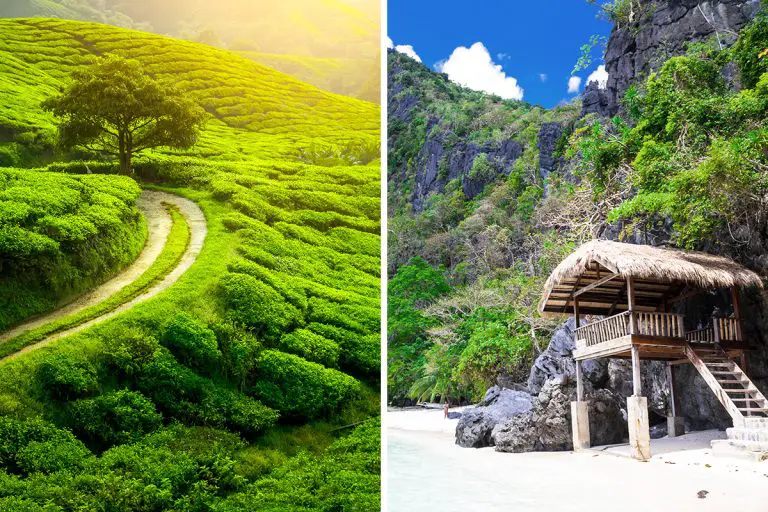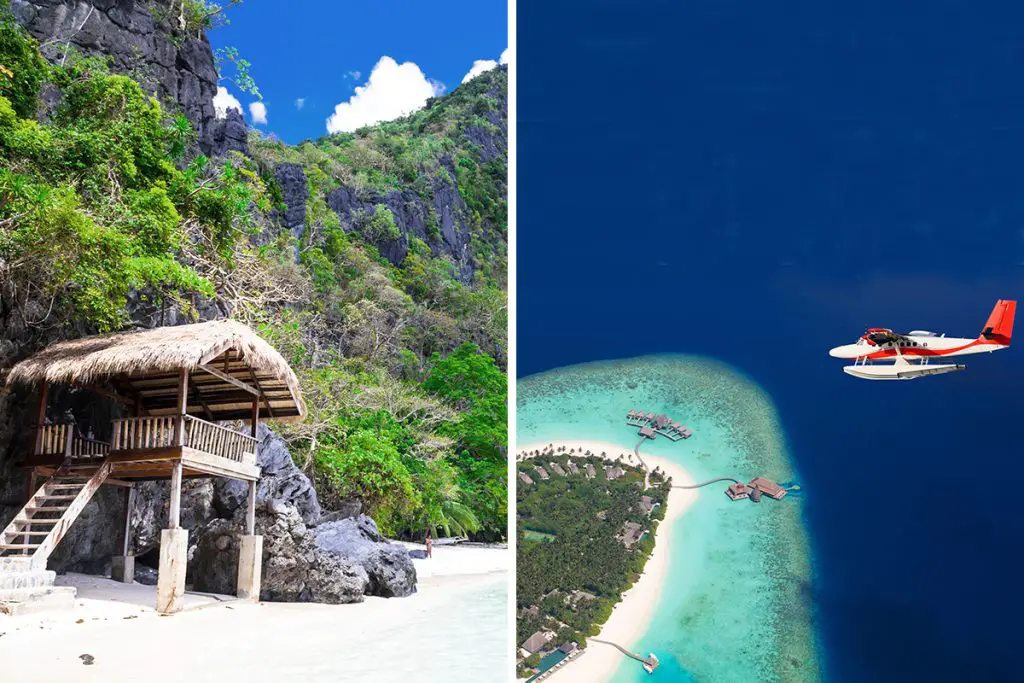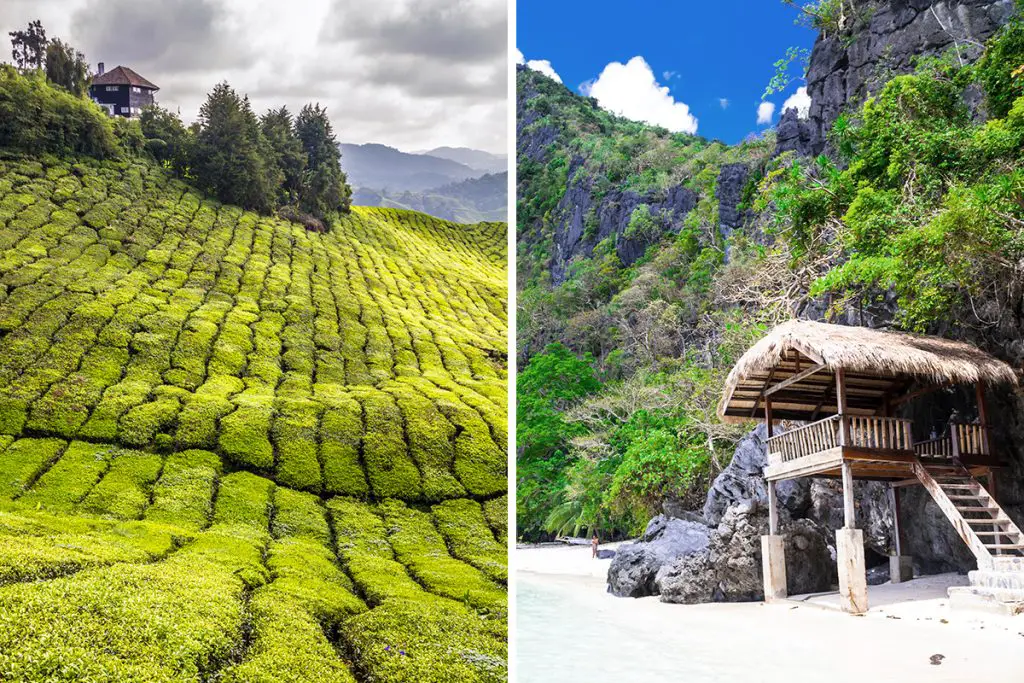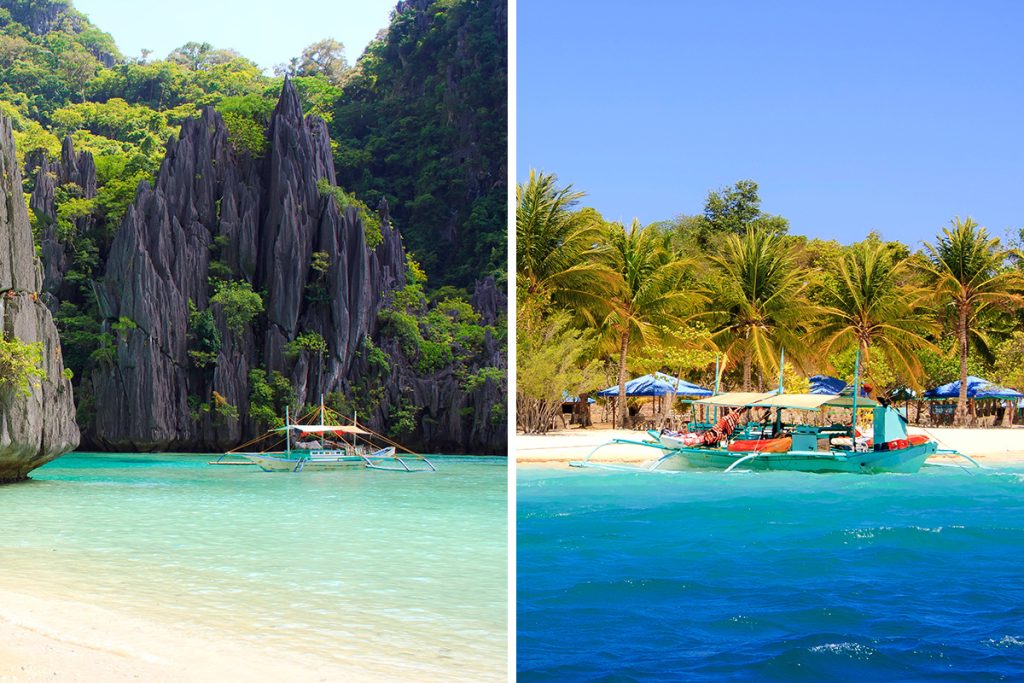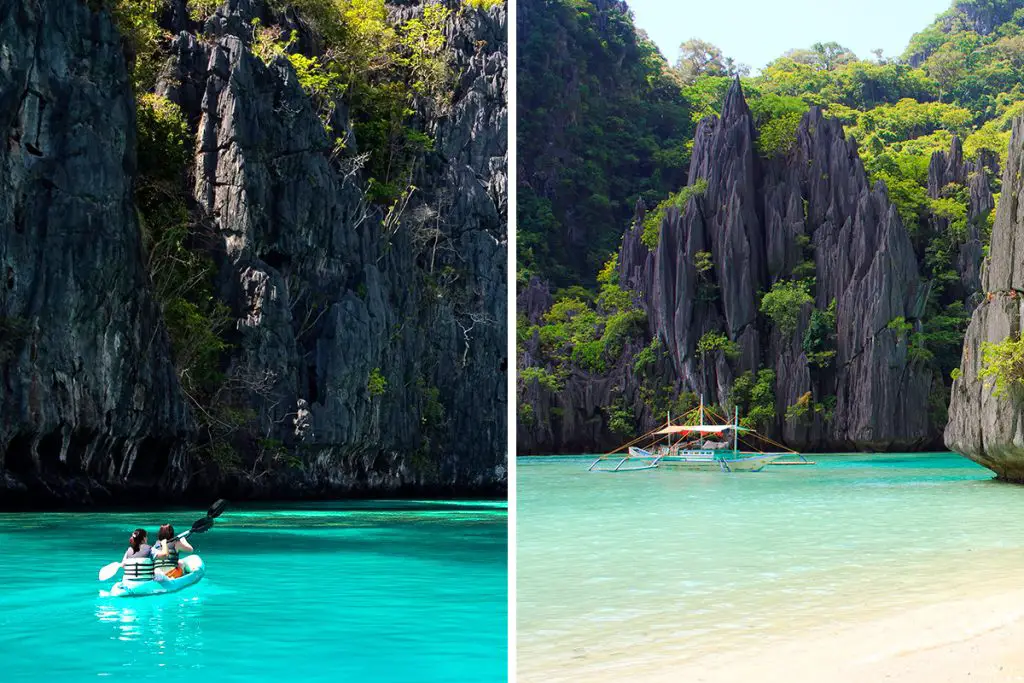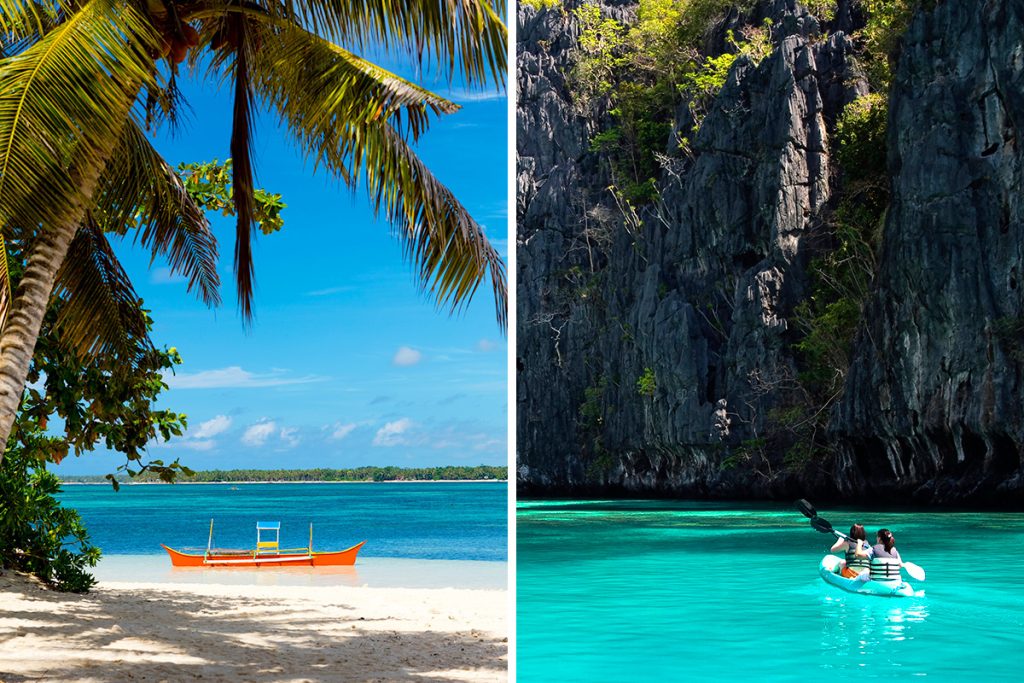Travel can transport you to different worlds, opening your eyes to unique perspectives and narratives. Between the alluring history of Sri Lanka and the vibrant culture of the Philippines, there’s so much to discover. Keep reading and delve deeper into what each destination has to offer. This might just help you choose the right cultural immersion for your next travel adventure.
History & Culture
Before comparing these two fascinating destinations, let’s take a step back to understand what we’re talking about when we say “history and culture”. History refers to the events, stories, and narratives that have shaped a place over time. Culture, on the other hand, encompasses the customs, arts, and social behaviors of a particular society or place.
Diving into Sri Lanka’s past, we find a country with a history that spans over 2,000 years.
Its narrative is shaped by various influences, including Buddhist, Hindu, and European colonial. These influences are evident in the architectural styles, traditional music, and dances you’ll see throughout the island nation. The centuries-old temples, grand palaces, and intricate stone carvings serve as silent storytellers of Sri Lanka’s rich history.
Meanwhile, the Philippines has a complex history marked by a blend of native cultures and foreign influences. The Spanish colonized the islands for over 300 years, followed by American rule for about 50 years. These historical periods have significantly shaped the Philippines’ unique cultural blend of East and West.
The country’s colorful festivals, enchanting folk dances, and a wide array of regional languages reflect its culturally diverse past.
Though they’re both rich in history, Sri Lanka and the Philippines differ in their cultural narratives. Sri Lanka’s culture is deeply rooted in religious traditions, primarily Buddhism. It’s visible in the way Sri Lankans lead their lives, from their architecture to their social interactions.
In contrast, the Philippines boasts a culture that’s a melting pot of various influences. With its Spanish colonial history, American influences, and strong native traditions, it offers a unique cultural panorama that sets it apart from its Asian neighbors.
In essence, both Sri Lanka and the Philippines offer a fascinating glimpse into rich histories and unique cultures. Sri Lanka may appeal to those looking for deep, spiritual cultural experiences, while the Philippines may be the perfect destination for those eager to experience a unique blend of Eastern and Western cultures.
Attractions & Activities
When traveling, the attractions and activities offered by a destination can truly make your experience memorable. Sri Lanka and the Philippines, both with a plethora of unique experiences, make this choice particularly intriguing. Let’s explore what each has in store for you.
In Sri Lanka, historical sites are a must-visit. The ancient city of Anuradhapura, once a prosperous center of Theravada Buddhism, offers relics such as dagobas (Buddhist stupas) and ancient pools. Similarly, the Sigiriya rock fortress, a UNESCO World Heritage site, amazes with its frescoes and palace ruins from the 5th century.
For nature enthusiasts, Sri Lanka offers experiences such as wildlife safaris at Yala National Park, where you can encounter elephants, leopards, and a multitude of bird species.
On the other hand, the Philippines, an archipelago of over 7,000 islands, presents a world of adventure. History buffs can explore the walled city of Intramuros in Manila, with its centuries-old forts and churches.
If you’re an explorer at heart, spelunking in the Puerto Princesa Underground River on Palawan island or hiking up the terraces of Banaue will offer adventures to remember. The Chocolate Hills of Bohol, a geological formation of over 1,200 hills, is another unique attraction not to be missed.
Each destination presents its own unique activities, as well. Sri Lanka offers elephant riding and traditional mask-making workshops. You could also take part in a traditional tea plucking experience in the hill country, where some of the world’s best tea is grown.
In the Philippines, you can participate in traditional weaving workshops or go island-hopping among the visually stunning islets.
In summary, both Sri Lanka and the Philippines provide a myriad of attractions and activities, each offering a different flavor of experience. Your choice would depend on whether you’d prefer Sri Lanka’s rich history and immersive nature experiences, or the Philippines’ blend of history, adventure, and unique natural wonders.
Beaches
The allure of pristine beaches is often a deciding factor for many when choosing a holiday destination. Sri Lanka and the Philippines, both with their spectacular coastlines, can be challenging to choose between. Let’s examine the beach offerings of both destinations.
Sri Lanka, being an island, boasts some breathtaking beaches. Bentota, for instance, spans an impressive 7.2 miles (approximately 11.6 kilometers). It offers serene sandy expanses and azure waters, perfect for sunbathing and casual swimming.
Unawatuna Beach, another popular choice, spans around 1.2 miles (roughly 2 kilometers) and is renowned for its golden sands and clear waters.
The Philippines, with its extensive archipelago, is home to some of the world’s most renowned beaches. Boracay Island, for instance, offers White Beach, an impressive stretch of 2.5 miles (around 4 kilometers) of powdery white sand and crystalline waters.
El Nido in Palawan is another famous spot, with hidden beaches nestled among limestone cliffs offering a sense of adventure and discovery.
While both countries offer stunning beaches, there are noticeable differences. Sri Lanka’s beaches are typically broader and offer a more relaxed atmosphere, ideal for sunbathing and leisurely swimming. The beaches in the Philippines, however, are often more secluded and offer more variety in landscapes, from white sand beaches to hidden coves surrounded by cliffs.
In conclusion, both Sri Lanka and the Philippines boast beautiful beachscapes that cater to different tastes. If you seek wide, sandy expanses and tranquil vibes, Sri Lanka might be your choice. For those looking for variety and adventure, the beaches of the Philippines may be more appealing.
Eating, Drinking & Nightlife
One of the best ways to experience a new culture is through its food, drink, and nightlife. These elements paint a vivid picture of a destination’s personality. Let’s embark on a culinary and nocturnal journey through Sri Lanka and the Philippines.
Sri Lanka offers a variety of flavorful dishes that reflect its multi-ethnic history. From the national dish of rice and curry to street food favorites like kottu roti, your tastebuds will go on a spice-laden journey. Vegetarians and vegans also have a wealth of options, with many dishes built around lentils, vegetables, and coconut milk.
In contrast, Filipino cuisine is a blend of indigenous, Spanish, and Chinese influences, resulting in a unique fusion. Adobo, the unofficial national dish, is a flavorful stew made from meat, vinegar, and soy sauce. Street-food lovers can try balut, a fertilized duck egg, if they’re up for something truly unique.
Sri Lanka offers a drinking experience rooted in its tea culture. The island is renowned for its Ceylon tea, and partaking in a traditional tea tasting is a must. Arrack, a local liquor made from coconut flower nectar, is another quintessential Sri Lankan experience.
The Philippines, on the other hand, is known for its local beers like San Miguel, and a variety of tropical cocktails made from local fruits. The country is also home to Tanduay rum, a popular choice for both locals and tourists.
When it comes to nightlife, Sri Lanka is more laid-back with beach-side parties, live music venues, and bars in major cities like Colombo and Galle. The Philippines, particularly in cities like Manila and Boracay, offers vibrant nightlife with bustling clubs, bars, and live music spots, offering a high-energy experience.
In conclusion, both Sri Lanka and the Philippines offer distinct and delightful experiences when it comes to eating, drinking, and nightlife. Whether it’s the spice-filled dishes of Sri Lanka, the unique fusion flavors of the Philippines, the tranquility of Sri Lankan nightlife, or the lively party scene in the Philippines, your choice depends on your personal preference.
Shopping
Shopping can be an adventure in itself, offering insight into the local craftsmanship, artistry, and traditions. Sri Lanka and the Philippines provide unique shopping experiences with an array of goods and items.
In Sri Lanka, shopping revolves around local handicrafts, gems, and tea. You can find intricately carved wooden masks, handwoven textiles, and a plethora of tea flavors in marketplaces such as the Pettah Market in Colombo. Galle, with its Dutch-era Galle Fort, is a treasure trove for antique lovers.
The Philippines offers a different shopping experience. The country is known for its intricate handicrafts, pearls, and woven items. Shopping malls are also a significant part of the retail landscape, with Manila housing some of the largest malls in the world. However, for a more traditional experience, the markets of Cebu and Baguio City offer local handicrafts and textiles.
In essence, Sri Lanka’s shopping scene provides an opportunity to take home a piece of the country’s artistry and tradition, whether it be a tea collection or a unique mask. The Philippines, on the other hand, offers both modern shopping amenities and traditional markets with locally made goods and pearls. Choose based on whether you want a more traditional or a mix of modern and traditional shopping experiences.
Accommodation
Finding a comfortable place to stay is a crucial part of any journey. Sri Lanka and the Philippines offer a range of accommodations to suit every traveler’s needs. Let’s delve into what you can expect in each destination.
In Sri Lanka, you can find a wide array of accommodations, from luxury resorts to budget-friendly guesthouses. For luxury seekers, places like the Tea Trails in the central highlands or the coastal Cape Weligama offer world-class facilities and stunning views.
Budget travelers can find plenty of guesthouses and homestays, particularly in tourist areas like Ella or Mirissa, offering a cozy stay and a chance to connect with locals.
The Philippines, being an extensive archipelago, offers diverse accommodation options. Luxury travelers can enjoy high-end resorts, particularly in places like Boracay and Palawan.
For those on a budget, numerous hostels, inns, and guesthouses across the country provide affordable stays. Unique accommodation experiences like traditional Nipa huts can also be found in various parts of the country.
In conclusion, both Sri Lanka and the Philippines cater to a variety of accommodation needs. Sri Lanka offers a blend of colonial-style luxury and homely guesthouses, while the Philippines offers tropical resorts and unique local stays. Your choice would hinge on the type of accommodation experience you seek during your travels.
Family-Friendliness & Children’s Activities
Traveling with family, especially children, requires careful consideration of activities and amenities. Let’s examine how Sri Lanka and the Philippines fare in terms of family-friendliness and children’s activities.
Sri Lanka, with its diverse attractions, offers numerous activities for families. Kids will love the elephant safaris in national parks like Udawalawe or the turtle hatcheries in Kosgoda. The National Museum in Colombo provides a fun learning experience about the country’s history. The scenic train rides, particularly from Kandy to Ella, are also family favorites.
The Philippines, with its numerous islands and unique biodiversity, provides an array of activities for children. The Tarsier Sanctuary in Bohol, where kids can see the world’s smallest primate, or the Donsol in Sorsogon, where families can interact with whale sharks, offer unforgettable experiences. Manila’s Mind Museum, an interactive science museum, is another kid-friendly attraction.
In conclusion, both Sri Lanka and the Philippines are quite family-friendly, offering a mix of wildlife, cultural, and interactive educational experiences. Sri Lanka’s wildlife safaris and museum visits might appeal to families who enjoy nature and history. The Philippines, with its unique wildlife encounters and interactive museums, would be great for families seeking adventurous and educational experiences.
Getting There & Getting Around
Ease of travel is a key factor when planning your vacation. This involves not only getting to the destination but also navigating within it. Let’s look at Sri Lanka and the Philippines in terms of accessibility and local transportation.
To reach Sri Lanka, Bandaranaike International Airport, located around 20 miles (32 kilometers) from the capital city of Colombo, serves as the main international gateway. Similarly, the Philippines can be accessed primarily via Ninoy Aquino International Airport in Manila, around 7 miles (approximately 11 kilometers) from the city center.
Once you’re in Sri Lanka, you’ll find that getting around is relatively straightforward. The country has a well-connected railway system that provides scenic journeys, particularly in the hill country. Tuk-tuks are ubiquitous for shorter distances, and private taxis can be hired for more comfort.
In the Philippines, traveling between islands often requires ferry rides or domestic flights. Within cities, jeepneys, tricycles, and taxis are common modes of transportation. For longer distances, buses and vans are widely used.
In summary, both Sri Lanka and the Philippines have their unique transportation systems. While Sri Lanka offers a more land-based travel experience with scenic train rides, the Philippines might appeal to those who don’t mind hopping between islands. So, whether you prefer land journeys or island-hopping could determine your choice of destination.
Weather
Weather plays a significant role in shaping your travel experience. Let’s look at how the weather stacks up in Sri Lanka and the Philippines.
Sri Lanka, being close to the equator, has a tropical climate. The temperature stays fairly constant throughout the year, averaging around 80°F (27°C). The country experiences two monsoon seasons – the Yala monsoon from May to August affecting the west and southwest regions, and the Maha monsoon from October to January impacting the northeast.
In contrast, the Philippines also has a tropical climate, but it is more influenced by its archipelagic nature. The average temperature ranges from 78°F to 90°F (25°C to 32°C) throughout the year. The dry season lasts from November to April, while the wet season runs from May to October, which can affect travel plans, especially to certain islands.
In summary, both Sri Lanka and the Philippines offer warm, tropical climates. However, Sri Lanka has two distinct monsoon seasons affecting different parts of the country, while the Philippines has a clearly defined wet and dry season. Your choice might depend on your tolerance for rain and your specific travel months.
Safety
Safety is always a concern when traveling abroad. So, let’s compare the safety levels in Sri Lanka and the Philippines.
Sri Lanka is generally considered safe for tourists. Petty crimes like pickpocketing or bag-snatching can occur, especially in crowded areas. However, violent crimes against tourists are relatively rare.
In terms of health safety, Sri Lanka has an efficient healthcare system, but travelers are advised to take necessary precautions against mosquito-borne diseases like dengue.
On the other hand, the Philippines also generally provides a safe environment for tourists, although incidents of petty crime are reported in urban areas. Some regions in the south have travel advisories due to political unrest.
As for health, the Philippines has a robust healthcare system in cities, but access might be limited in remote areas. Travelers should be aware of tropical diseases like dengue and malaria.
In summary, while both Sri Lanka and the Philippines require standard travel safety precautions, specific regional advisories may apply in the Philippines. Health access is good in both, but necessary precautions against tropical diseases are advised. Your comfort level with these factors can guide your destination choice.
Cost
Understanding the cost of travel can help you plan your budget effectively. Let’s compare the costs involved in traveling to Sri Lanka and the Philippines.
In Sri Lanka, travelers can expect a moderate cost of living. A decent meal might cost around 400 LKR (2 USD), and a budget guesthouse could range from 2000 to 4000 LKR (10-20 USD) per night. Transportation, particularly trains and buses, is very affordable.
The Philippines, on the other hand, is also quite affordable for travelers. A good meal can cost around 200 PHP (4 USD), and budget accommodations might range from 1000 to 2000 PHP (20-40 USD) per night. Inter-island travel can add to the transportation cost.
In summary, both Sri Lanka and the Philippines are budget-friendly destinations, but there can be slight variations. Costs for food and accommodation are somewhat similar, but transportation might be a bit higher in the Philippines due to inter-island travel. Depending on your travel style and budget, this could influence your decision.
Which Is Better – Sri Lanka or the Philippines?
Now that we’ve examined various aspects of traveling to Sri Lanka and the Philippines, you’re probably wondering which is the better option for your next adventure. Let’s summarize what we’ve discovered and see if we can help you make that decision.
In terms of history and culture, Sri Lanka’s historical depth and Buddhist influence offer a uniquely enriching experience. However, the Philippines, with its colonial history and a blend of Asian and Western cultures, offers a different, but equally captivating cultural immersion.
When it comes to attractions and activities, Sri Lanka’s wildlife safaris and picturesque train rides stand out, whereas the Philippines shines with its vibrant city life and myriad islands ready for exploration. For beach lovers, Sri Lanka offers a mix of sandy beaches and surf spots, while the Philippines prides itself on white sandy beaches and crystal clear waters.
If you are a food lover, the spicy flavors of Sri Lankan cuisine and the fusion of tastes in the Philippines both promise to thrill your palate. Nightlife in the Philippines is more lively with its karaoke bars and clubs, while Sri Lanka has a more laid-back vibe. Shoppers may find Sri Lanka’s local handicrafts appealing, while the Philippines offers a mix of local markets and modern malls.
As for accommodations, both countries offer a range of options to suit various budgets, with the Philippines offering more in terms of luxury resorts. For families, both countries are welcoming, but the Philippines, with its numerous family-friendly resorts and children’s activities, might be more appealing.
Transportation in Sri Lanka is land-based and scenic, especially the train rides, while in the Philippines, you’ll have to consider inter-island flights or ferries. Weather-wise, both countries offer a tropical climate, but your preference for a wet or dry season may sway your decision. Both are generally safe for travelers, with standard precautions.
Lastly, the cost of travel is fairly similar in both countries, although the Philippines might edge slightly higher due to transportation between islands.
In summary, your decision between Sri Lanka and the Philippines could hinge on your personal preferences. If you’re into deep cultural experiences, wildlife exploration, and scenic train rides, Sri Lanka is your go-to. However, if island-hopping, vibrant nightlife, and a mix of Eastern and Western cultures excite you, consider heading to the Philippines. Both promise unforgettable experiences and hold their unique appeals.

